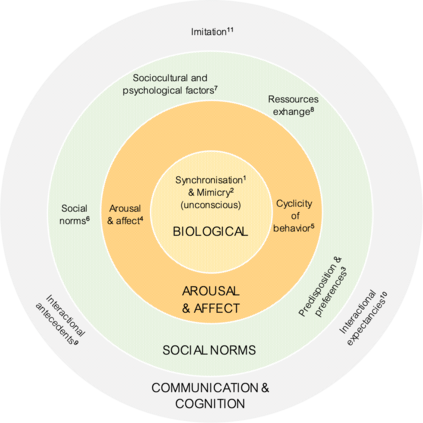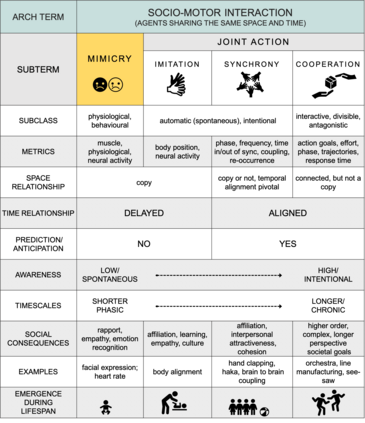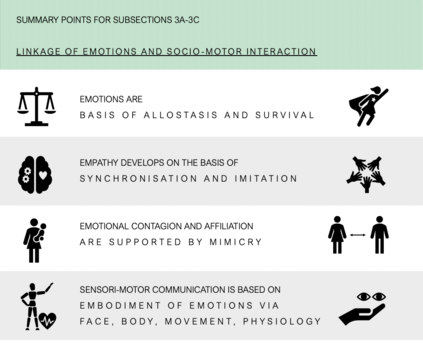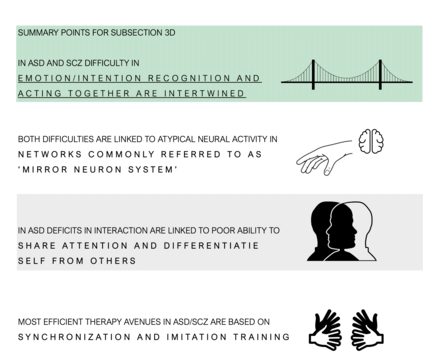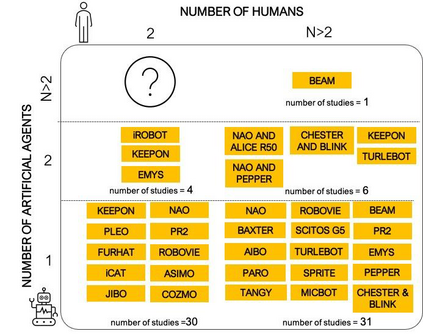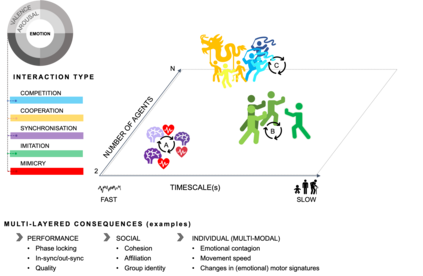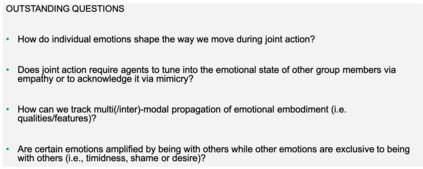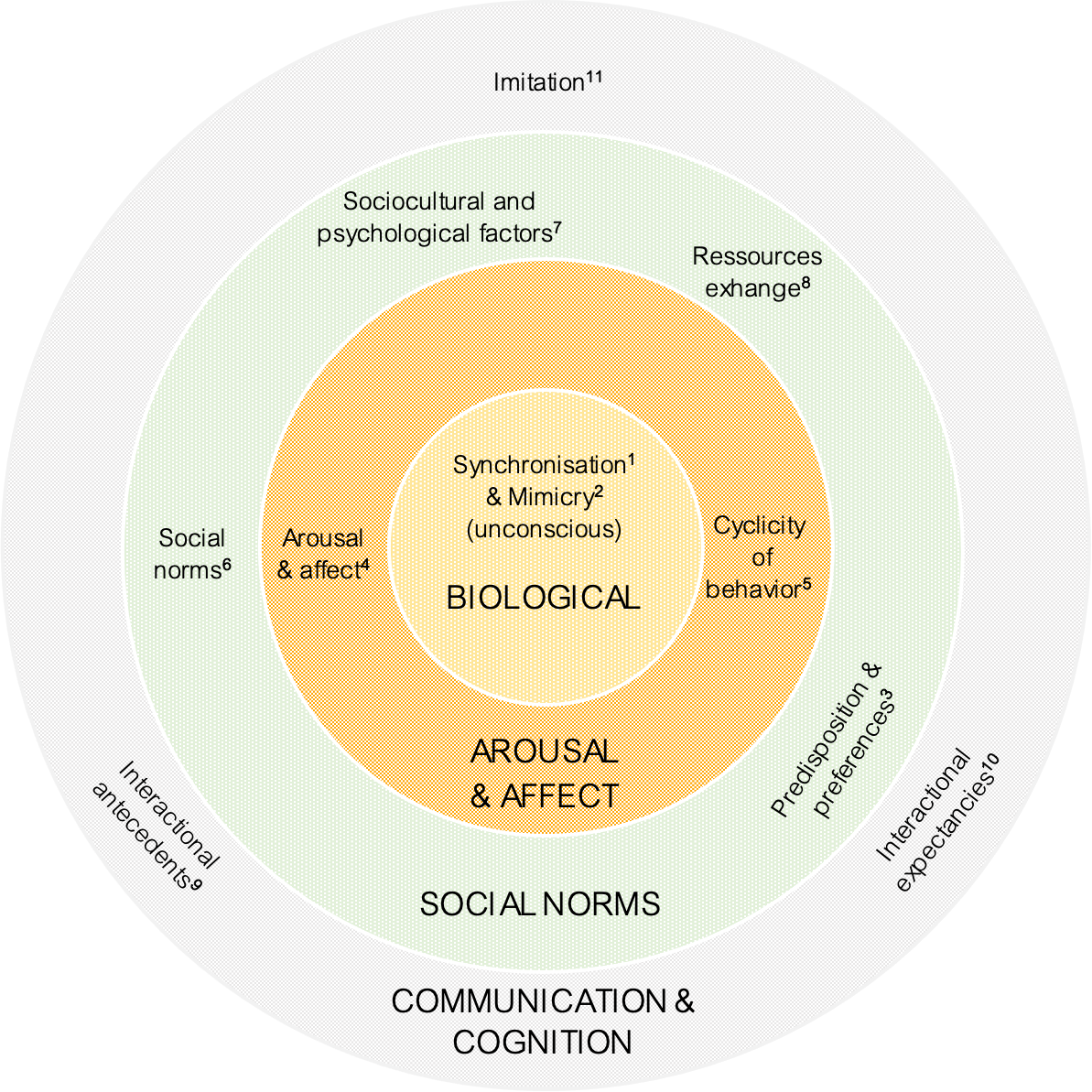Our daily human life is filled with a myriad of joint action moments, be it children playing, adults working together (i.e., team sports), or strangers navigating through a crowd. Joint action brings individuals (and embodiment of their emotions) together, in space and in time. Yet little is known about how individual emotions propagate through embodied presence in a group, and how joint action changes individual emotion. In fact, the multi-agent component is largely missing from neuroscience-based approaches to emotion, and reversely joint action research has not found a way yet to include emotion as one of the key parameters to model socio-motor interaction. In this review, we first identify the gap and then stockpile evidence showing strong entanglement between emotion and acting together from various branches of sciences. We propose an integrative approach to bridge the gap, highlight five research avenues to do so in behavioral neuroscience and digital sciences, and address some of the key challenges in the area faced by modern societies.
翻译:我们的日常生活充满了无数的联合行动时刻,不管是儿童玩耍,成年人一起工作(即团队体育),还是陌生人一起在人群中航行。联合行动将个人(和情感的化身)聚集在一起,在空间和时间上。然而,对于个人情感如何通过体现在群体中的存在而传播,以及联合行动如何改变个人情感,我们却知之甚少。事实上,基于神经科学的情感处理方法基本上缺少多剂成分,反向联合行动研究还没有找到一种方法将情感作为社会运动互动模型的关键参数之一。在这个审查中,我们首先找出差距,然后储存表明情感和不同科学分支之间强烈纠缠的证据。我们建议采取综合办法弥合差距,突出在行为神经科学和数字科学中这样做的五个研究途径,并解决现代社会在这一领域面临的一些关键挑战。

